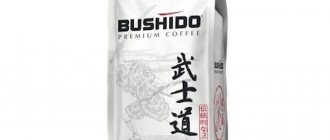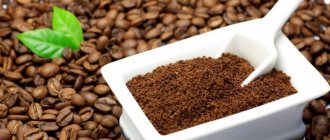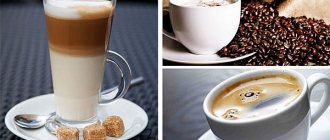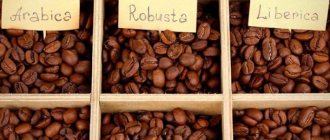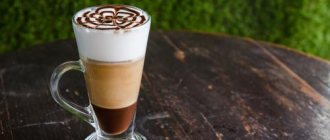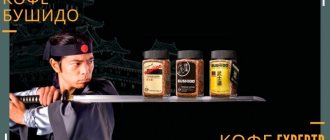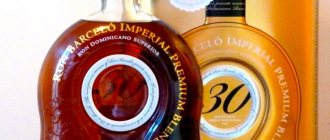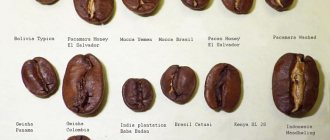What is live coffee?
The name of the product means that it contains more valuable nutrients than usual. Freshly harvested coffee beans contain many vitamins, minerals and other active substances. But long-term storage and heat treatment lead to the fact that most of them are lost.
Live coffee is produced using a special technology that allows it to retain a significant proportion of beneficial nutrients. It is important that the raw materials are not stored for a long time before frying, but are as fresh as possible. The shelf life of finished products is only six months. After this, coffee is considered ordinary, also devoid of the unique aroma and taste characteristic of the living.
Differences between live coffee and regular coffee:
- short shelf life - up to 6 months;
- live has a more tart taste and pronounced aroma;
- the smell does not last long at all; after a month in some varieties it may completely disappear.
In Russia, LIVE GROUP is the only company that produces live coffee. The natural product has a wide range - from well-known blends to elite single varieties. Due to the fact that the production is located in the Russian Federation, there is an opportunity to try a fresh drink of the highest quality.
Advantages and characteristics
Live coffee contains about 120 components, vitamins, and minerals that benefit the human body. From the moment of roasting, the maximum content of unique components in the beans is maintained during the first 6 months. After this period, the value of the grain drink noticeably decreases, as well as the brightness of taste and aroma.
Healthy coffee contains:
- Antioxidants . They help the body fight premature aging and reduce the effects of radiation. These substances effectively fight stress and chronic fatigue. In general, antioxidants support the beauty and healthy appearance of a person.
- Caffeine . Increases a person’s vigor, makes him active and mobile, and adds strength. It affects not only physical, but also mental activity, preventing drowsiness and apathy.
- Minerals and trace elements in the form of phosphates, sulfates, calcium, magnesium, iron and sodium. All these substances support a healthy mind and body.
- B vitamins . They increase the activity of development of biochemical processes, synthesize thyroid hormones, normalize hemoglobin in the blood and lower cholesterol levels.
- Acids . The content of chlorogenic, citric, malic, caffeic, nicotinic and acetic acid is significant. All of them are involved in improving the digestion process, preventing the formation of caries and fighting pathogenic microorganisms.
- Antihistamine components prevent the occurrence of allergic reactions.
Live coffee can cope with severe headaches, improve mood and well-being, and also reduce the harmful effects of nicotine and alcohol on the body.
The group produces live coffee in Russia. The beans are roasted and packaged directly in the country. This technology allows us to deliver fresh product to the consumer in the shortest possible time.
The product line contains several blends of grains that grow in Ethiopia, Colombia, Brazil and other tropical countries.
The benefits and harms of live coffee
The product contains about 120 active nutrients that have a beneficial effect on the human body. At the same time, do not forget about the content of caffeine and other alkaloids that can cause harm if the drink is abused. Pregnant and lactating women should especially drink it with caution.
Useful properties of live coffee:
- strengthening the cardiovascular system, reducing the risk of heart attacks and strokes;
- restoration of hematopoietic function;
- helps reduce symptoms and the risk of allergies;
- preserves youth and beauty;
- normalizes the functioning of the nervous system;
- gives a charge of vigor and strength.
How live coffee can harm in some cases:
- irritability;
- insomnia;
- increased heart rate;
- increased blood pressure;
- increased uterine tone (dangerous during pregnancy).
To avoid negative consequences, drink no more than 1 cup of live coffee per day.
What does the word “strong” mean for coffee?
Strength is the concentration of a certain taste (sweet, sour, salty or bitter) or flavor mixture. Coffee is characterized mainly by its bitter taste. Therefore, the more bitter the taste of the drink, the stronger it is considered. This opinion is wrong. The body (strength) of coffee drinks is determined by the number of taste buds it irritates. From this it follows that coffee requires the presence of different tastes. Drinks made from coffee beans have sweet, sour and bitter flavors; they have virtually no salty taste.
It turns out that the more concentrated the flavors, the stronger the coffee. Of course, the richness of the aroma is an important component of the strength of the coffee, as is the richness of the extractives in the solution. The more a coffee drink is diluted with liquid, the lower its flavor strength. In this case, the amount of extractives will remain unchanged. This is how the coffee strength is adjusted.
Assortment of live coffee
Despite the fact that there is only one main manufacturer of the product, the range is quite wide. The varieties are conventionally divided into classic and exclusive. The difference is in the raw materials used. Also, the many types are explained by the fact that live coffee is produced in several forms:
- grains;
- ground;
- finely ground for brewing in a cup;
- capsule
When purchasing any variety, pay attention to the date. The fresher the product, the more aromatic and tastier the drink will be.
Live coffee beans and ground
To produce the product, the company purchases only high-quality high-mountain raw materials, hand-picked and grown in regions of the equatorial climate zone.
Assortment of classic coffee:
- Classic – shades of chocolate, citrus and wild berries are felt.
- Arabica – soft taste and pleasant sourness.
- Mokka has a velvety thick taste and persistent aroma. Raw materials from Ethiopia.
- Bourbon – balanced taste, persistent aroma. The variety is named after the place where the raw materials for its production were grown. Now Bourbon Island is called Reunion, but the name of the product has not changed.
- Original is distinguished by notes of prunes and exotic fruits.
- Espresso – chocolate and citrus shades, amazing aftertaste.
- Cafe Noir features French roasting. This is a dark, velvety, rich drink. An ideal variety for preparing a drink with milk.
- Rio-Rio – persistent aroma, balanced taste. Suitable for French press, geyser coffee makers, coffee machines.
Exclusive coffee is available in a wider range and costs much more than classic varieties. Some of the varieties:
- Absolut Drive Gold Edition - everything here speaks of quality - elite Arabica, rich taste and aroma, strong infusion. Notes of walnut, caramel and cocoa are felt.
- Absolut Drive Black Edition - taste with notes of tart dark plum, blueberry, dark chocolate.
- Jamaica Blue Mountain - delicate and refined taste, no bitterness, rich aftertaste, wine aroma.
- Ethiopia Sidamo – piquant fruity aroma, taste with chocolate notes.
- Ecuador Changaimina - invigorates, energizes, delights with a rich aroma and balanced taste.
- Ecuador Galapagos – the taste is restrained, balanced, with traditional bitterness and pleasant smoky notes.
- Kenya Kilimanjaro combines a bouquet of berry, lemon and orange notes with light spice.
- Cappuccino has a thick consistency, rich sweetness, as well as a honey aftertaste.
- Yemen Khaimi with a rich blackberry taste and wine-fruit aroma.
- Irish liqueur - this variety is characterized by a creamy liqueur taste.
- Indonesia Sumatra Mandelin – strong aroma, nutty flavor.
- Aged Java – the taste is soft without bitterness with hints of spice.
For brewing in a cup
Just pour it into a cup, add hot water and wait 2 minutes. The taste is as close as possible to regular freshly ground grain. The range is similar to regular ground. The packaging is marked: “ground for cup.” The difference is in the fineness of the grind. The product for Turkish or French press is produced with a medium degree of grinding, and for brewing in a cup - fine.
Capsule
You can purchase live coffee capsules for your Nespresso coffee machine. Most varieties come in 10 pieces per package. But the Columbia Bogota variety can also be purchased in 50 pieces per box.
Assortment of capsule coffee:
- Brazil Rio-de-Janeiro – bright color, deep and tart taste, intense aroma.
- Colombia Bogota – pleasant aromas of herbs, light bitterness and wine tones.
- Espresso Extra Strong is a very strong and invigorating coffee, the aftertaste is tart, with fruity undertones.
- Espresso Strong is strong and invigorating, with a hint of dark chocolate.
- Espresso Splendid is a sophisticated drink with citrus, chocolate and fruity notes.
- Ethiopia Sidamo – chocolate, berry and wine shades.
The best varieties of bean coffee of the Living Coffee brand
The managers of the online store “Living Coffee” will help you understand the huge, diverse, very interesting world of coffee.
Different types of coffee beans differ not only in the way they are roasted, but also in the places where they were grown and collected. Therefore, its quality is directly influenced by climatic conditions and traditions of producing countries.
Elite varieties of bean coffee
Elite varieties of coffee beans are unique, one-of-a-kind, distinguished by certain characteristics:
- characteristics of the growing location;
- a special method of roasting grains, pre-processing them;
- limited quantity;
- at a high price (sometimes reaching astronomical amounts).
But, despite the simply unrealistic prices, elite varieties are extremely popular all over the world. This type of coffee is in demand by true connoisseurs who can afford this luxury. In Russia, these varieties began to be sold relatively recently.
Our online store “Live Coffee” presents many varieties of bean coffee , distinguished by unique aromas and excellent taste.
The best varieties of coffee beans are purchased directly from the plantations at the time of harvest. And only after determining the quality of coffee, processing, calibration of beans, it is exported from the country. To preserve the highest quality of coffee beans, all rules of transportation and storage are observed. Elite coffees are sold at special auctions or delivered directly to the customer.
From a wide palette, two main varieties of bean coffee can be distinguished - Arabica and Robusta.
Arabica
Of course, Brazil is considered the generally recognized world leader in this segment. Most of its coffee plantations are Arabica. Its grains have a milder taste with a slight sourness.
The assortment of the online store of the Living Coffee brand includes high-, mid-, and low-mountain Arabica varieties.
The caffeine content in its beans directly depends on the location of the plantation:
- from its height above sea level;
- soil composition;
- proximity to the equator.
Knowing that mountain Arabica contains half as much caffeine as valley Arabica, you can easily navigate the choice of Arabica beans:
- Arabica montana is suitable for light tonic effects;
- and for active stimulating actions - collected in the valleys.
Robusta
The second most common and in demand coffee bean is Robusta. Unlike coffee made from Arabica beans, Robusta beans have a more bitter taste. The main advantage of this variety is its high strength (1-2.5% caffeine), so it is used in strong coffee blends.
To soften its specific, rather strong taste, Robusta is mixed with Arabica.
The production of instant coffee most often occurs using robusta beans - during the preparation of which the specific bitterness disappears.
Coffee Bourbon
The most valuable grains are those collected from young trees. The most unique variety is Bourbon coffee, which has retained all its properties since ancient times without undergoing any types of crossing.
Today this variety is preserved only in Brazil. Its yellow berries have a thin skin, which allows better penetration of the sun to the grain. Thanks to this, coffee beans are dried in a natural way - right on the tree, and the finished, dried ones are collected. To clean the peel, after collecting the beans, there is no need, like other varieties, to douse them with water, thereby preserving the aroma and all the beneficial substances in the coffee. Yellow Bourbon coffee has a sweetness to it, so if roasted properly, you don't have to add sugar.
Yellow Bourbon coffee with a distinct aroma, a long aftertaste of creamy notes and notes of fried bread.
Santos Bourbon coffee, with a pronounced fruity taste, has sourness, and also has a long aftertaste.
Coffee Mocha (Mocha, Mokka)
Mocha coffee is one of the oldest varieties, on the basis of which breeders have developed many modern varieties. This is the best coffee bean among modern coffee varieties, with a varied flavor that depends on the plantation:
- woody;
- caramel;
- floral;
- cheese;
- mushroom;
- walnut;
- chocolate;
- fruit.
Grown and prepared on the basis of ancient customs and special recipes, today Mocha coffee continues to delight with unusual, unique flavors and aromas. The classic taste of this coffee covers all shades of chocolate and is accompanied by an interesting chocolate aftertaste for a long time.
Mocha is an evening or, in extreme cases, an afternoon drink. It perfectly warms in cold, rainy weather, while its invigorating effect is not too pronounced, due to the presence of milk in it.
Blue Mountain
Jamaican Blue Mountain coffee is considered the rarest and most expensive type of coffee, a masterpiece among the classic varieties.
This type of coffee is grown on small plantations located in areas adjacent to the top of the Blue Mountain, surrounded by mango and papaya trees, above 2000 m above sea level. While all the coffee in the world is usually delivered in bags, Blue Mountain coffee comes in special, special wooden barrels. This distinctive feature is due to the limited quantity of this variety.
Blue Mountain Jamaica has a uniquely balanced, refined, delicate taste, completely devoid of bitterness. It has a wonderful aroma of wine and a rich aftertaste. No wonder they call it royal. This truly elite variety will not leave any coffee gourmet indifferent.
Bean Living Coffee is a unique opportunity to enjoy the excellent, subtle aroma of an invigorating drink that can charge you with vivacity and energy for future achievements. To preserve the unique taste and aroma during the preparation of coffee, we recommend that lovers of this drink use coffee machines.
To ensure a supply of freshly roasted beans, order coffee wholesale , retail, for your home or office.
approximate cost
Live coffee can be ordered on the manufacturer’s website. Prices of goods depend on the weight of the package and type. Exclusive varieties are more expensive than classic ones.
Table. Prices on the official website
| Coffee | Package weight, g | Minimum price, rub. |
| Classic | ||
| Ground for cup | 100 | 81 |
| 200 | 155 | |
| Ground | 150 | 132 |
| 200 | 103 | |
| 500 | 564 | |
| Corn | 500 | 582 |
| 1000 | 830 | |
| Exclusive | ||
| Ground | 200 | 290 |
| Corn | 200 | 272 |
| 250 | 317 | |
| 500 | 711 | |
| 1000 | 1270 | |
| Capsules | ||
| Capsule coffee | 10 pieces. | 174 |
| 50 pcs. | 873 | |
The most expensive type of live coffee is Kopi Luwak. The price of a pack weighing 1000 g is 26,842 rubles. For comparison, for a similar pack of live bean coffee of classic varieties you will have to pay a maximum of 830 rubles.
Reviews
Elena, Samara:
I bought ORIGINAL ground live coffee at Pyaterochka. The smell was felt even through the package; the production date was released about a month ago. I didn’t like that the degree of grinding was not indicated. Too small for a geyser coffee maker will not work. The aroma is invigorating, the strength is good, and fortunately the grinding didn’t upset me either.
Maria, Russia:
I decided to try coffee for brewing in a cup. The variety I chose was Arabica. Brews quickly. But there are also a lot of shortcomings - the coffee taste is too soft and the tobacco taste is too strong. In short, a sea of promises, but in reality it’s not for everyone.
Dmitry, Moscow:
I read negative reviews and am amazed. Buy fresh product! The expiration date is also indicated there. I order delivery to the office from the manufacturer. There are different varieties, everyone likes them.
Features of brewing “live” coffee in a cup
To enjoy the aroma of coffee, you must follow some preparation rules. So, it is better to prepare a “live” drink in a glass or ceramic cup. A prerequisite is that the walls of the dish must be at least one and a half centimeters.
To brew Arabica coffee in a cup, prepare the following ingredients:
- a glass of boiling water;
- 3 teaspoons with the top of ground coffee;
- sugar to taste.
The water temperature should not exceed 90 degrees Celsius. This indicator is considered optimal for brewing a coffee drink in a cup.
Pour the prepared dry ingredients into a bowl. Mix them thoroughly and press down lightly with a fork. Boil water and let it cool. Pour in the dry ingredients, stir thoroughly with a spoon, cover with a plate, and infuse the aromatic drink for about 10 minutes.
Advice from a coffee lover: before brewing coffee in a cup, you need to warm it up. To do this, fill the bowl with boiling water and let it sit for about 3 minutes. Or just put it in the microwave.
Thanks to the fine grinding of coffee beans, you can enjoy your favorite drink not only at home, but also at work. Brewing “live” coffee follows the same principle as instant coffee. And if the latter option is not a completely healthy drink, then “live” coffee is literally enriched with useful components.
